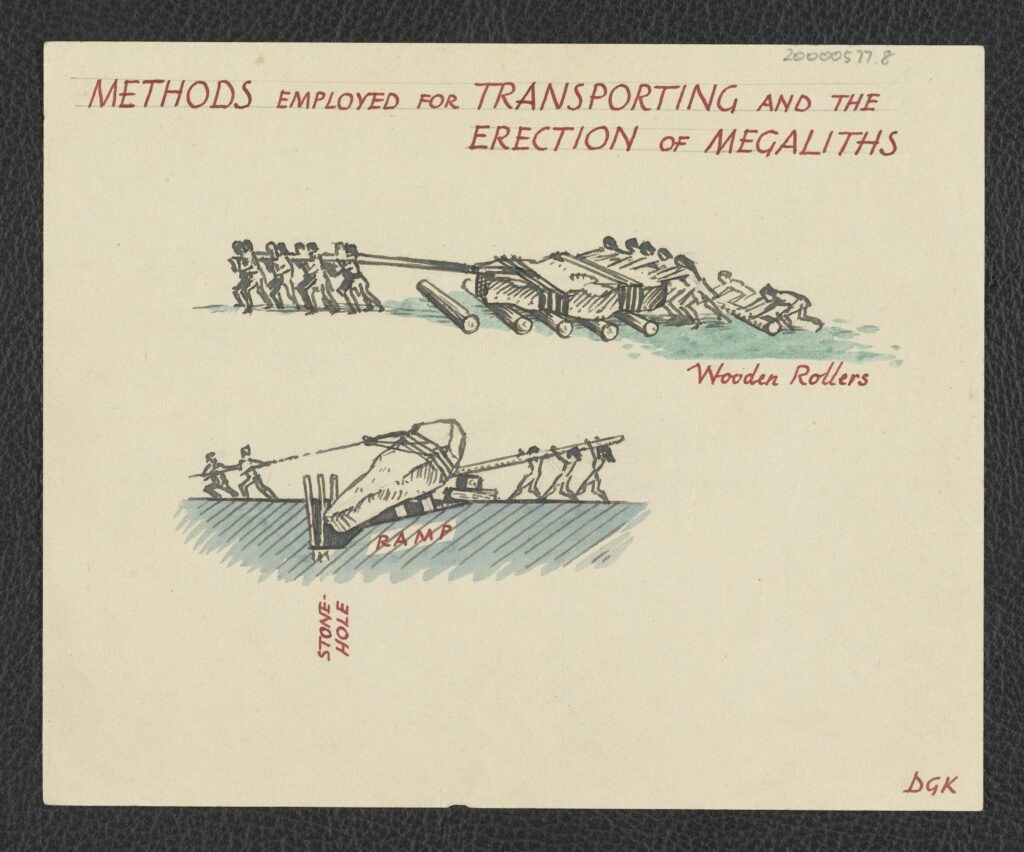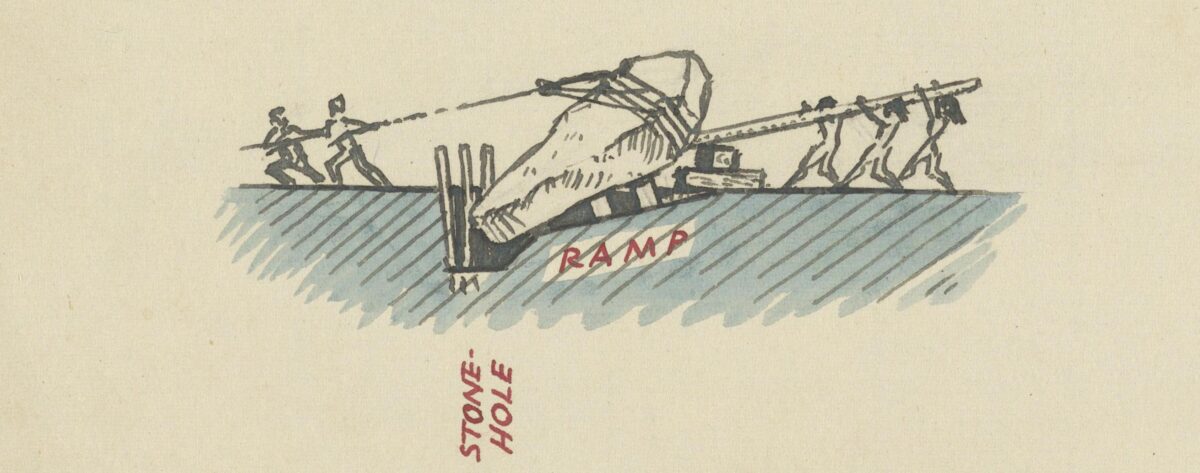I’m volunteer Kiri, studying for a Masters in Cultural Heritage in Southampton. My job for now is to check the photos and catalogues that have been captured so far. The first step is to check that the photos are clear, complete and standardised. Then make sure the description of the photo and other information in the catalogue matches the photo. I have also been creating catalogue information from scratch when needed. This work is a nice experience for me because it is usually very difficult for people to have access to and view all the archives in a museum’s collection. And the Avebury archives often have some interesting pictures.
This hand-drawn picture is from archaeologist Dennis Grant King, and caught my eye while I was checking the catalogue. The title is ‘Methods employed for transporting and the erection of megaliths’, and unfortunately it is undated, but possibly produced between 1940-1950. In fact this piece caught my attention because it is so exquisitely composed, simple but not simplistic. And I’m sure many people who come across Avebury have similar questions about how the ancient people moved and erected these huge and heavy stones during the Neolithic period. This drawing by King gives a reasonable speculation.

King suggests that Avebury’s megaliths were moved by wooden rollers. People put wooden rollers on the ground and used the rolling of the wooden rollers to keep the megaliths moving. The use of ropes can also make it less difficult to manoeuvre giant stones. When lifting heavy objects, the use of ropes allows the lifting force of multiple people to be combined, reducing the amount of weight each person needs to carry.
The erection of the boulder depicted in the picture was carried out by means of ramp and lever. Inclined planes reduce the force required to move heavy objects, and wood placed on a slope lessens the friction between the object and the ground. Due to the force of gravity, the megalith could slide down the ramp into the stone hole. Plus the use of long wood for leverage saves the force needed to erect the megalith. The friction stakes standing at the other side of the Stone hole helped to keep the megalith balanced without falling over towards the far side of the stone-hole, whilst also preventing the stone from damaging the edge of the stone-hole as it slid into it.
In Smith’s edited volume ‘Windmill hill and avebury: excavations by Alexander Keiller, 1925-1939’, reference is made to evidence of construction techniques found by archaeologists at Avebury in the 1960s. The archaeologist Richard Atkinson suggested that the most efficient way of transporting monoliths was sleds and rollers, although these two methods may not necessarily have been used. And the process of erecting the stone vertically probably used levers and ropes.
Smith explains some of the evidence found in the holes at the base of the megaliths. Sometimes varying numbers of stakes have been inserted against the back side of the base of the stone hole to reduce the friction between the megaliths and the edge of the stone hole. In addition, some smaller stones have been found at the bottom of the stone hole, perhaps acting as another anti-friction device and also providing support for the megaliths. After the megalith was erected, the space around the megalith would have been filled with earth and sarsen packing stones to support the stone and keep it standing.
King’s suggestion of how the megaliths were moved and erected is partly similar to Atkinson’s and Smith’s views, including the use of wooden rollers, levers and ropes. And archaeological evidence proves that when erecting boulders, Neolithic people used ramps and stakes to reduce friction.
Reference
Windmill hill and Avebury: excavations by Alexander Keiller, 1925-1939, ed. by Isobel Smith (Oxford: Clarendon Press, 1965), pp. 218-222.
